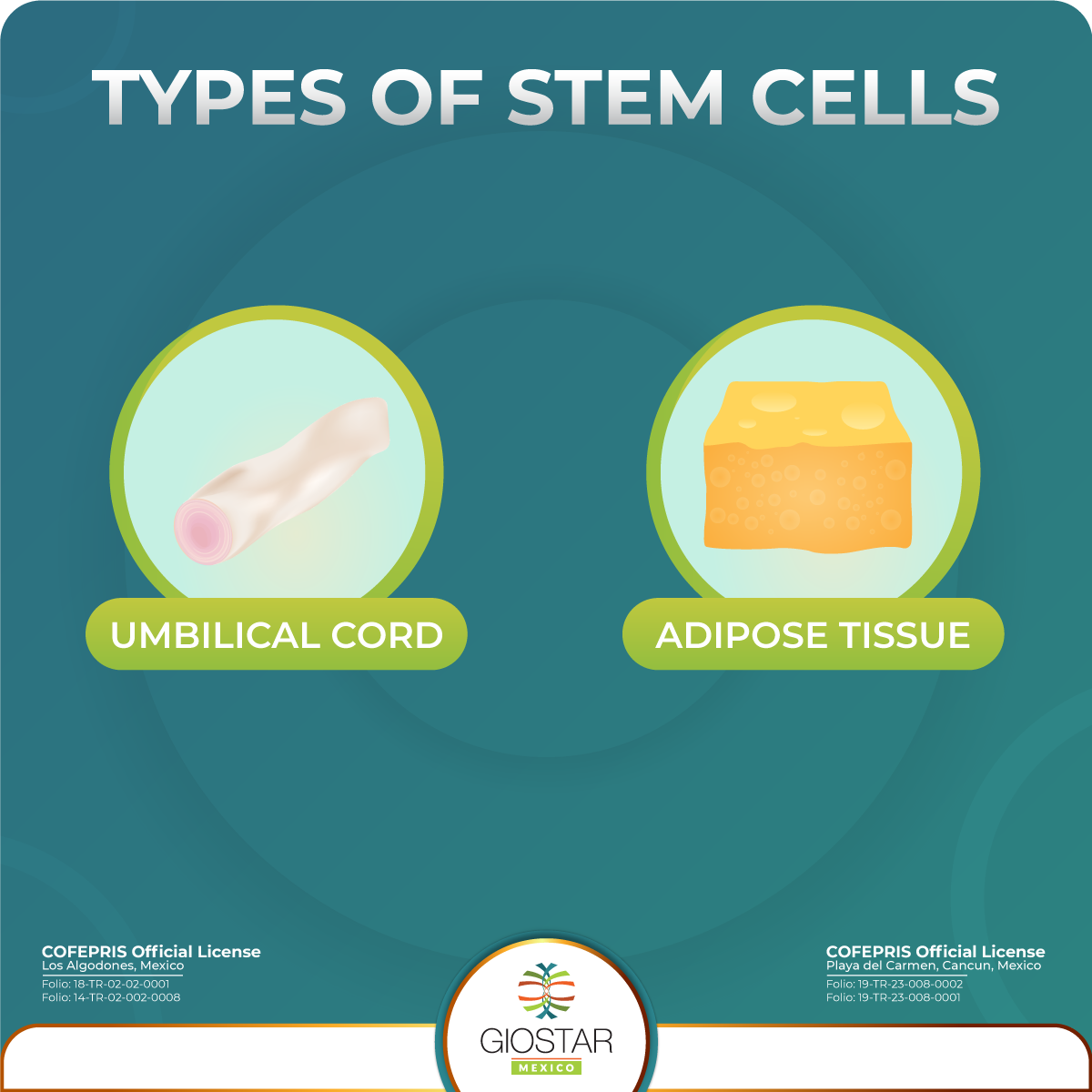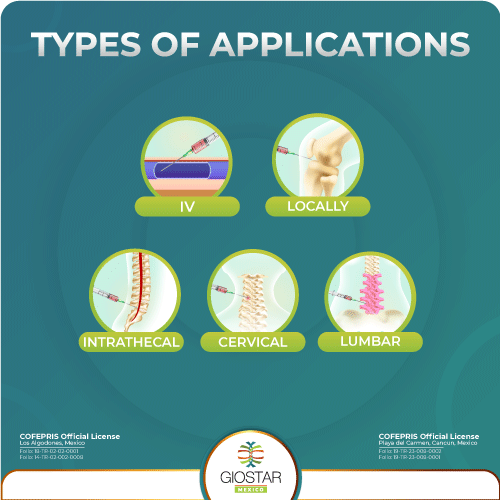How does Stem Cell Therapy work?
Stem cells have the ability to differentiate into specific cell types. The two defining characteristics of a stem cell are perpetual self-renewal and the ability to differentiate into a specialized adult cell type. There are two major classes of stem cells: pluripotent that can become any cell in the adult body, and multipotent that are restricted to becoming a more limited population of cells.*
Pluripotent Stem Cells
Pluripotent stem cells being used in research today mainly come from embryos, hence the name, “embryonic stem cells”.(1) Giostar Mexico does not use these type of Stem Cells under any circumstances. Pluripotent stem cells have not yet been used therapeutically in humans because many of the early animal studies resulted in the undesirable formation of unusual solid tumors, called teratomas.* Teratomas are made of a mix of cell types from all the early germ layers. Later successful animal studies used pluripotent cells modified to a more mature phenotype which limits this proliferative capacity. Cells derived from pluripotent cells have been used to successfully treat animals.*
Multipotent Stem Cells
These cells have the plasticity to become all the progenitor cells for a particular germ layer or can be restricted to become only one or two specialized cell types of a particular tissue. Giostar Mexico implements Multipotent Mesenchymal Stem Cells in patients’ treatments, be it allogenic or autologous. Multipotent stem cells found in bone marrow are best known, because these have been used therapeutically since the 1960’s**. Recent research has found new sources for multipotent stem cells of greater plasticity such as the placenta and umbilical cord blood.*** Further, the heart, until recently considered void of stem cells, is now known to contain stem cells with the potential to become cardiac myocytes. **** Similarly, neuro-progenitor cells have been found within the brain.*****

How do Mesenchymal stem cells work?
MSCs are widely used in the treatment of various diseases due to their self-renewable, differentiation, anti-inflammatory, and immunomodulatory properties. Mesenchymal stem cells utilize their self-renewal, immunomodulatory, anti-inflammatory, signaling, and differentiation properties to influence positive change within the body. Mesenchymal stem cells (MSCs) also have the capacity to self-renew by dividing and developing into multiple specialized cell types present in a specific tissue or organ. Mesenchymal stem cells are adult stem cells, meaning they present no ethical concerns, MSCs are not sourced from embryonic material.
One principal objective of Stem Cell Therapy is to facilitate the patient’s body to heal itself by mitigating the symptoms of the condition treated. This is the fundamental premise of Regenerative Medicine: Slow down, Stop and Regenerate.
So, How does Stem Cell Therapy work?
What stem cell therapy does is to help those whose stem cells are low or damaged to slow down, stop or even regenerate the lost tissue or cells. Patients can expect different results even if they have the same condition because stem cell therapy and the regenerative medicine field focus on none-invasive therapies that allow the body to regenerate without external intervention.
Imagine a city under siege. This is a patient’s body under attack by a disease or condition. The people inside the city are the organs, immune system and various cells that work to combat/rebuild the damage done. Stem Cell Therapy works in three stages: first, it stops the siege (damage/attack to the body); second, it provides the building materials for rebuilding; last, it tells the citizens (organs, immune system and cells) how to use the building materials.
At Giostar Mexico we provide stem cell therapy for muscular injuries and for a variety of degenerative diseases such as: Parkinson, Arthritis, Multiple Sclerosis, Diabetes type 1 and type 2, ALS, and more.
Depending on the patient’s condition, stem cell applications allowed in Mexico are:
- Intravenous (IV): we inject Stem cells into the bloodstream with mannitol to expand blood volumes in the central nervous system to ensure they reach the affected area.
- Intrathecal (IT): through this procedure, we infuse stem cells into the cerebrospinal fluid through the subarachnoid spaces of the spinal canal.
- Locally: Stem Cells are directly delivered in the affected area considering the condition treated.

References
*Biehl JK, Russell B. Introduction to stem cell therapy. J Cardiovasc Nurs. 2009;24(2):98-105. doi:10.1097/JCN.0b013e318197a6a5.
**Good RA, Meuwissen HJ, Hong R, Gatti RA. Bone marrow transplantation: correction of immune deficit in lymphopenic immunologic deficiency and correction of an immunologically induced pancytopenia. Trans Assoc AM Physicians. 1969;82:278–85
***Kogler F, Sensken S, Airey JA, et al. A new human somatic stem cell from placental cord blood with intrinsic pluripotent differentiation potential. J Exp Med. 2004;200(2):123–35.
****Beltrami AP, Barlucchi L, Torella D, et al. Adult cardiac stem cells are multipotent and support myocardial regeneration. Cell. 2003;114(6):763–76.
*****Greenfield JP, Ayuso-Sacido A, Schwartz TH, et al. Use of human neural tissue for the generation of progenitors. Neurosurgery. 2008;62(1):21–37.


